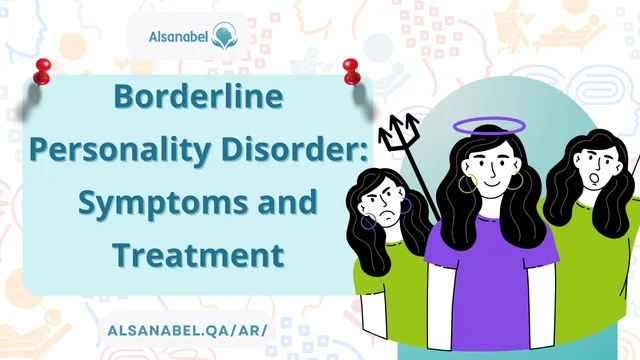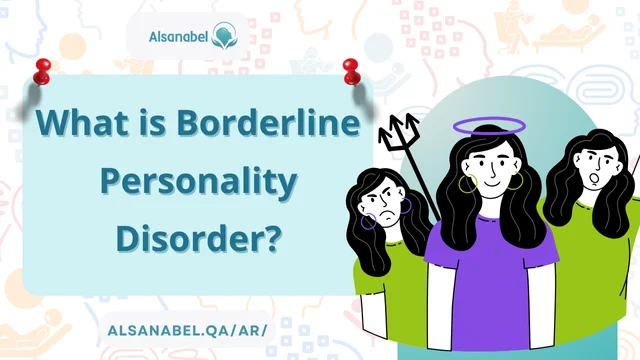
Borderline Personality Disorder (BPD) is a complex and often misunderstood mental health condition that significantly impacts individuals’ emotional regulation, relationships, and sense of identity. Despite its challenges, greater awareness and effective treatments have made it possible for those living with BPD to lead fulfilling lives. This article provides a comprehensive exploration of borderline personality disorder, including its symptoms, causes, and treatment options.
What is Borderline Personality Disorder?
Borderline Personality Disorder is a mental health condition characterized by intense emotional instability, impulsive behaviors, and difficulties in maintaining stable relationships. It affects how individuals perceive themselves and others, often leading to heightened emotional responses and feelings of abandonment. Understanding BPD is crucial for addressing its effects and finding appropriate support for those affected.

Key Symptoms of Borderline Personality Disorder
Emotional Instability
One of the hallmark symptoms of borderline personality disorder is intense mood swings that can last for hours or days. Individuals may experience profound sadness, irritability, or anxiety that seems disproportionate to the situation at hand.
Fear of Abandonment
A deep fear of being abandoned, whether real or perceived, is another common characteristic of BPD. This fear can lead to desperate efforts to avoid separation or rejection, sometimes resulting in clingy or overly dependent behavior.
Impulsive Behaviors
People with BPD often struggle with impulsivity, which might manifest as reckless spending, substance abuse, binge eating, or unsafe driving. These actions are frequently attempts to cope with overwhelming emotions or a sense of emptiness.
Unstable Relationships
Relationships can be particularly challenging for those with BPD. A pattern of intense, stormy relationships marked by extreme shifts between idealization and devaluation is a defining feature of borderline personality disorder.
Identity Disturbance
Individuals with BPD often report having an unclear or unstable self-image. This identity disturbance can cause frequent changes in goals, values, or career aspirations.
What Causes Borderline Personality Disorder?
Genetic Factors
Research suggests that genetics play a role in the causes of BPD. Individuals with a family history of the disorder or other mental health conditions are more likely to develop BPD themselves.
Environmental Influences
Traumatic experiences, such as childhood abuse, neglect, or separation, are common environmental contributors to BPD. These factors can shape how individuals respond to stress and form relationships.
Brain Function and Structure
Studies have shown that differences in brain areas associated with emotion regulation, impulse control, and decision-making may contribute to the development of BPD.
Treatment Options for Borderline Personality Disorder
Psychotherapy
Psychotherapy is the cornerstone of BPD treatment and includes several effective approaches:
- Dialectical Behavior Therapy (DBT): DBT focuses on teaching skills for managing emotions, improving relationships, and reducing self-destructive behaviors.
- Cognitive Behavioral Therapy (CBT): CBT helps individuals identify and change distorted thought patterns that contribute to their symptoms.
- Schema-Focused Therapy: This therapy at Al Sanabel Specialized Psychiatric Center In Qatar targets negative patterns formed during childhood and works to replace them with healthier coping mechanisms.
Medication
While medication does not cure BPD, it can be used to treat co-occurring symptoms such as depression, anxiety, or impulsivity. Antidepressants, mood stabilizers, or antipsychotic medications may be part of a comprehensive treatment plan.
Support Groups
Peer support can be incredibly beneficial for individuals with BPD. Sharing experiences in a group setting provides validation and fosters a sense of community.
Lifestyle Changes
Incorporating healthy habits, such as regular exercise, a balanced diet, and mindfulness practices, can significantly enhance the effectiveness of other treatments and improve overall well-being.
Challenges of Living with BPD
Living with BPD can present numerous challenges, including difficulties in maintaining relationships, managing emotions, and holding down a job. These challenges often lead to feelings of isolation and frustration. However, with the right treatment and support system, individuals can develop the skills necessary to overcome these obstacles and thrive.
Frequently Asked Questions

1. What are the main symptoms of BPD?
The main symptoms include emotional instability, impulsive behaviors, fear of abandonment, unstable relationships, and identity disturbance.
2. What causes borderline personality disorder?
The causes include genetic factors, traumatic experiences, and differences in brain structure and function.
3. How is BPD treated?
BPD is treated through psychotherapy, medications, support groups, and lifestyle changes.
4. Can BPD be managed without medication?
Yes, many individuals manage BPD effectively through therapy and lifestyle adjustments without the need for medication.
5. What are the challenges of living with BPD?
The challenges include difficulty maintaining stable relationships, emotional regulation, and societal stigma. However, with proper treatment, these challenges can be addressed.
Borderline Personality Disorder is a complex condition that affects every aspect of an individual’s life. However, with increased awareness, access to effective treatments, and a strong support system, individuals with borderline personality disorder can achieve meaningful progress and lead fulfilling lives. Understanding and compassion remain crucial in supporting those on their journey toward healing.
